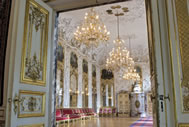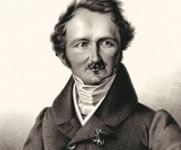Select your favourite Castles, Parks and Gardens in Germany
Select your most popular castle, most romantic park or most impressive garden in Germany.
1. Neuschwanstein Castle, Hohenschwangau
show on map »
2. Burghausen Castle

show on map »
3. Wilhelmshöhe Palace & Park, Kassel
show on map »
4. Herrenchiemsee Palace
show on map »
5. Linderhof Palace, Oberammergau
show on map »
6. Hohenzollern Castle, Zimmern
show on map »
7. Glienicke Palace & Park, Berlin-Zehlendorf
show on map »
8. St. Emmeram Palace, Regensburg

show on map »
9. Sanssouci Palace & Park, Potsdam
show on map »
10. Royal Herrenhausen Gardens, Hannover
show on map »
Travel Planner
Select an option...






